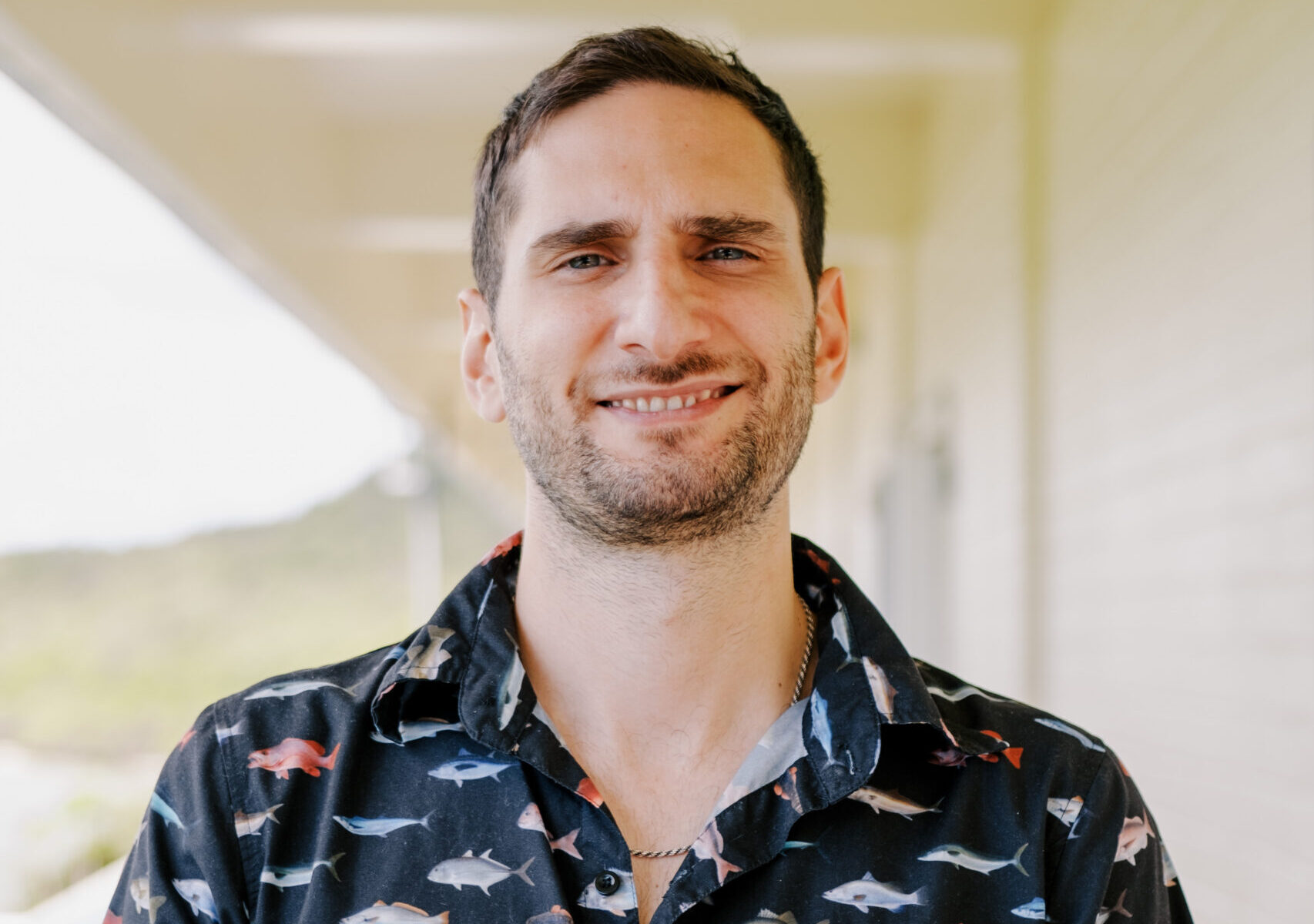

Born and raised in Greece by the Mediterranean Sea, Michalis Mihalitsis, Ph.D., gained an interest in fish as a child, fishing with his family and keeping aquariums in his home. He went on to study marine biology and earned his doctorate at James Cook University, studying the ecology of predatory fishes.
Mihalitsis has a special interest in the functional ecology and evolution of fish species, which includes the study of how fish feed and function in their habitats as well as how fish have evolved different morphological features to better thrive in those habitats.
With experience doing this type of research and a desire to live by the ocean, Mihalitsis accepted the position at the University of Guam where his office at the Marine Lab has a clear view of the deep blues of Pago Bay.
“I was telling myself that wherever I end up next I want to be close to the ocean,” said Mihalitsis who was previously conducting post-doctoral research in California. “So when the opportunity came and I found out that the university was looking for a professor in fish morphology, which is literally what my research is about, I knew that I was going to apply to this job.”
This research is relevant to Guam, especially as the island continues to see changes within its coral reef systems and the species found within them due to changing weather patterns.
“We know that reefs are changing. Their benthic composition is changing,” said Mihalitsis. “So we need to know how different species or different fish trophic groups are going to react to these changes because that’s how we can make estimates and predictions about how coral reefs are going to look in the future.”
For a community that relies heavily on the ocean and fisheries, these predictions can then assist our people in learning how to properly manage resources and protect our reefs.
As the new assistant professor of vertebrate morphology at the Biorepository, Mihalitsis is excited about using the micro-CT scanner for his research. Like those used in hospitals, the CT scanner offers a non-invasive way of studying organisms by taking X-ray images of a specimen from various angles and combining them to create three-dimensional images. Mihalitsis expects that the use of the CT scanner will allow him to provide visuals that can elevate his research involving the morphological features of fish.
In general, Mihalitsis hopes that his experience living and working in Guam will allow him to develop as a mentor and educator. He attributes his accomplishments to being guided by amazing mentors throughout his postgraduate and post-doctoral studies. He aspires to fill that role for his future students so that they can become great researchers and critical thinkers.


